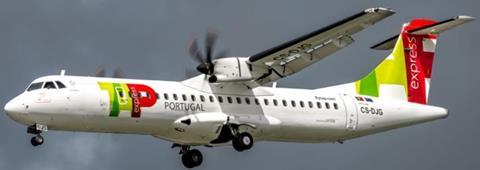Investigators have revealed that a White Airways ATR 72-600 operated a return flight to Lisbon in an unairworthy state after the captain failed to notice significant damage to the turboprop following a hard landing.
The aircraft, operating for TAP Express, suffered a tail-strike after an unstable approach resulted in a bounced touchdown at Fez on 6 July last year, says Portuguese investigation authority GPIAA.
Such was the impact that a flight attendant was injured, an access panel fell from the ceiling, and disembarking passengers queried the cabin crew about what had happened during the landing.
The aircraft sustained aft fuselage underside abrasion damage, deformation between frames 35-38, and other evidence of scraping on the runway including sheared rivets and wear on the tail-skid.

After the ATR taxied to the apron, Fez airport ground personnel installed a support – designed to avoid tipping during boarding – beneath the tail-skid.
“No reports regarding aircraft condition discrepancies were made during the tail-support installation procedure,” says GPIAA.
It states that the captain prepared for the return flight by performing a walk-round, and carried out a general inspection, looking for problems on the main landing-gear.
Although the tail-skid is about 0.8m from the ground – allowing simple assessment of its condition, according to the manufacturer’s procedures – the captain did not detect any anomalies during the external inspection.
He told the inquiry that he saw the tail support but could not see damage to the fuselage or the evidence of runway contact on the tail-skid owing to its low position.
GPIAA says the aircraft’s crew operating manual states that the tail-skid shoe needs to be inspected during each walk-round, and that maintenance is required if the shoe is scraped and a red indicator shows signs of wear.
The inquiry indicates that the captain had reservations given that, after the walk-round, he had attempted to access the aircraft condition monitoring system to check the vertical acceleration recorded during the landing.
Despite this hint of doubt, says GPIAA, the aircraft was not removed from service for inspection and the captain accepted the risk of flying the ATR back to Lisbon.
“The crew made the return flight without performing an aircraft condition assessment and, again, without reporting any anomalies upon arrival in Lisbon,” it adds.
According to White Airways the damage to the aircraft was discovered the following day, prior to its conducting a scheduled flight.
GPIAA learned of the accident on 10 July, four days after it occurred. The operator had ferried the aircraft to Cascais. While flight-data recorder information from the accident could be retrieved, the cockpit-voice data could not.


























